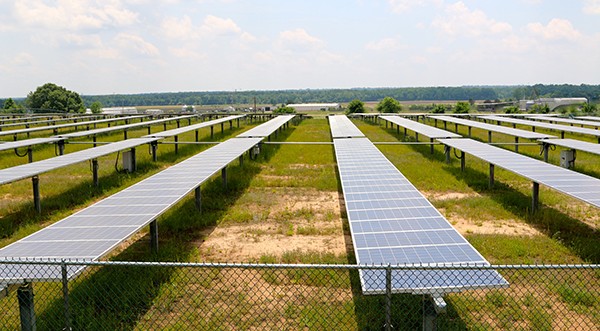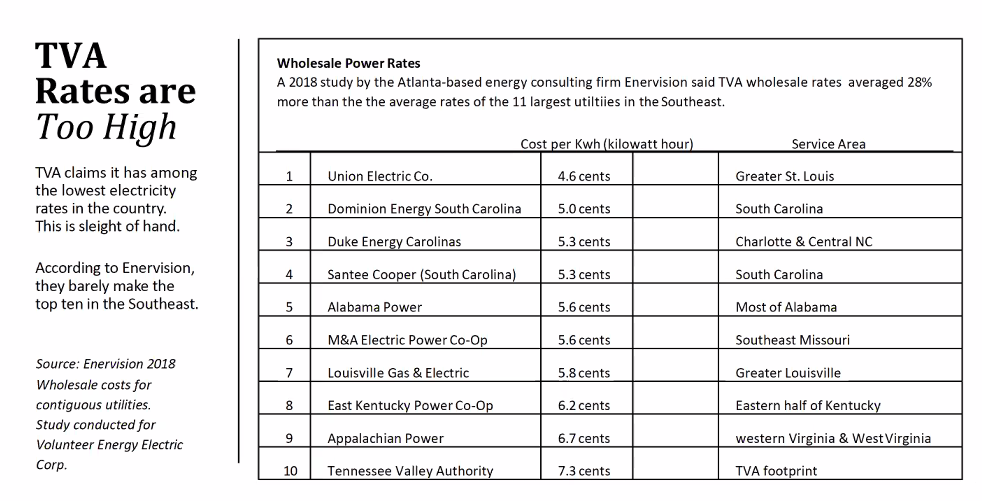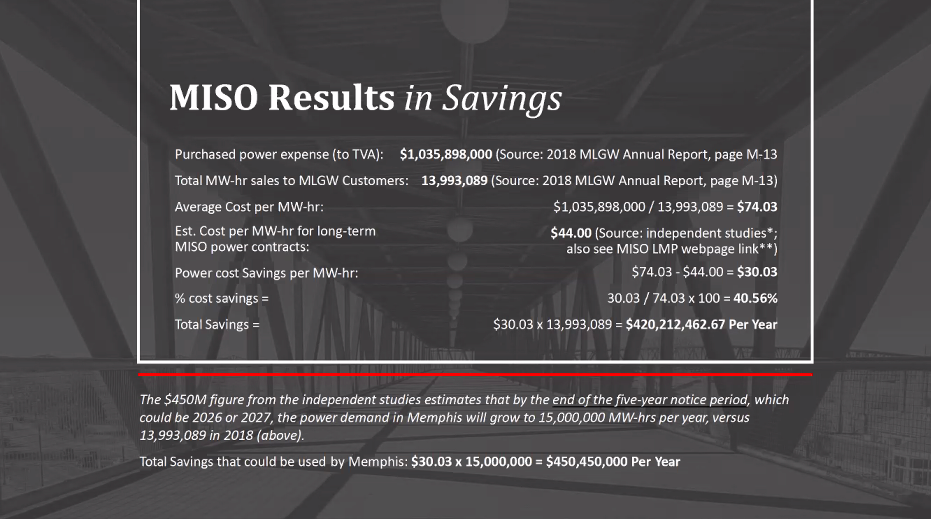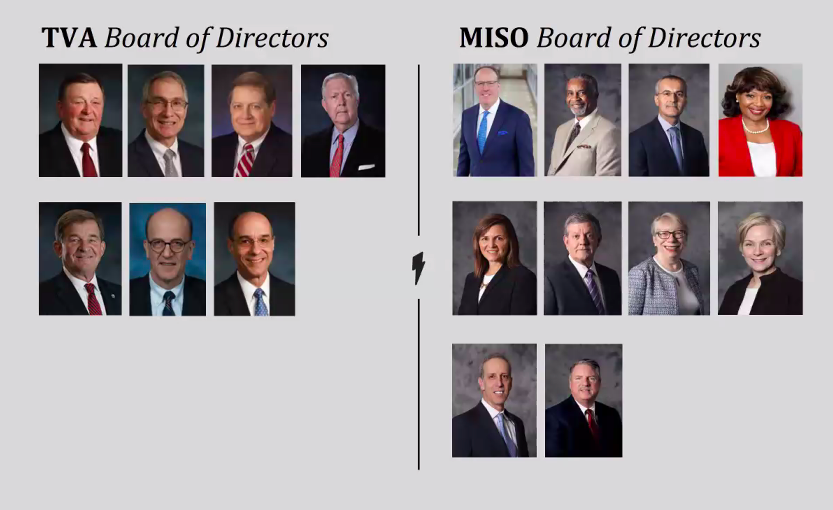 Southern Alliance for Clean Energy
Southern Alliance for Clean Energy
Solar power keeps getting brighter in the Southeast but glows dimly in states served by the Tennessee Valley Authority (TVA), according to a report. But TVA touts a new program that will allow for more solar growth.
The new Solar in the Southeast report is the third from the Southern Alliance for Clean Energy (SACE), a group based in Knoxville. The report focuses on the watts of solar power available for customers in seven states: Alabama, Georgia, Florida, Mississippi, North Carolina, South Carolina, and Tennessee.
“The unbiased watts per customer metric continues to shine a light on which states and utilities demonstrate leadership year after year and which are continuing to fall behind and need a serious course correction to avoid denying customers the economic and environmental benefits of clean solar power,” said Bryan Jacob, SACE’s solar program director.
The first solar report predicted Southeastern utilities would produce 10,000 megawatts of solar power by 2019, which they did by the end of last year. The group is now predicting that figure will double by 2022 and will ramp up to 25,000 megawatts of solar power by 2023. If utilities hit this prediction, the Southeast could have more than 10 percent of its total power capacity from the sun.
 MLGW
MLGW
A solar panel array at Agricenter International
Solar power is taking off in North Carolina and South Carolina, according to the report, as three utilities in those states take the top three slots for overall solar power capacity. TVA ranks 10th on this list of 14 utilities, clocking in at 99 megawatts of solar power available for each of its customers.
Each year, SACE identifies solar power leaders in the Southeast (SunRisers) and solar power laggers (SunBlockers). TVA again earned a SunBlocker designation from the group for cutting its Green Power Providers program but also for ”promoting misleading claims of solar growth,” which earned it a “dishonorable mention again for this reporting cycle.”
“Hyperbolic claims of ’up to’ 14 gigawatts of solar are not only inaccurate, they are intentionally misleading,” reads the study. “The actual budget that was requested and approved is for 5.5 gigawatts by 2030.
“That is the more reliable ’plan’ the SACE forecast is predicated on, and most of that solar is planned for the latter years of that timespan. Between now and 2023, TVA anticipates 800 megawatts of new utility-scale solar across the entire region, with most of that dedicated to specific, non-residential customers.”
TVA says it is “a national leader in carbon reduction, with nearly 60 percent carbon-free energy generation,” making its system the “greenest” in the Southeast. This system includes nuclear and hydroelectric power generation.

First Congo’s first solar panels
Last week, TVA touted a new program for local power companies like Memphis Light, Gas and Water (MLGW) that would allow them to generate more solar power. Power companies that have signed TVA’s 20-year long-term partnership agreements can generate up to 5 percent of their average energy needs.
MLGW has not yet signed such an agreement with TVA. Officials here are still considering a possible move away from TVA that, according to numerous studies, could save the utility and Memphis customers millions of dollars each year and allow more flexibility to generate power. MLGW does not generate any power now, buying it all from TVA at about $1 billion per year.
If all 154 local power companies signed TVA’s long-term contract and all of them generated their allowed 5 percent of solar power, they could collectively generate between 800 megawatts and 2,000 megawatts of power, according to TVA.
“TVA’s integrated resource strategy continues to bring cleaner, greener power to the region while maintaining low rates and reliability,” Doug Perry, TVA senior vice president of Commercial Energy Solutions, said in a statement. “This option empowering local generation adds another avenue to grow distributed and renewable energy resources across the valley.
“Working with our local power company partners, we continue to bring new solutions to market that reduce carbon, meet changing customer needs, and attract jobs into our communities.”
 Clewisleake | Dreamstime.com
Clewisleake | Dreamstime.com
The West Tennessee Solar Farm
The Southeast is becoming a “regional solar powerhouse,” according to SACE executive director Dr. Stephen A. Smith, but more work needs to be done.
“We are pleased to see key utilities in some southeastern states continuing to grow our region’s vast solar resource,” Smith said. Florida, North Carolina, Georgia, and South Carolina are all making significant progress, but this begs the question of why Tennessee, Alabama, and Mississippi continue to lag behind.
“Leadership in legislative and regulatory policy coupled with real leadership by certain utilities has the South becoming a regional solar powerhouse.”
Read SACE’s full report here.





 TVA/Facebook
TVA/Facebook  MLGW/Facebook
MLGW/Facebook  Bit Squad/Facebook
Bit Squad/Facebook  Memphis International Airport/Facebook
Memphis International Airport/Facebook 
 Toby Sells
Toby Sells  TVA
TVA 
 Southern Environmental Law Center
Southern Environmental Law Center  TVA
TVA  There’s a Better Way Than TVA
There’s a Better Way Than TVA  There’s a Better Way Than TVA
There’s a Better Way Than TVA  There’s a Better Way Than TVA
There’s a Better Way Than TVA  There’s a Better Way Than TVA
There’s a Better Way Than TVA  There’s a Better Way Than TVA
There’s a Better Way Than TVA 
 Southern Alliance for Clean Energy
Southern Alliance for Clean Energy  MLGW
MLGW 
 Clewisleake | Dreamstime.com
Clewisleake | Dreamstime.com  TVA
TVA  Tennessee Valley Authority
Tennessee Valley Authority